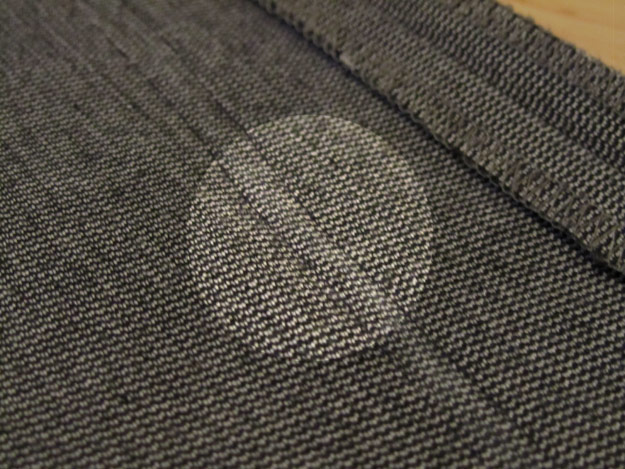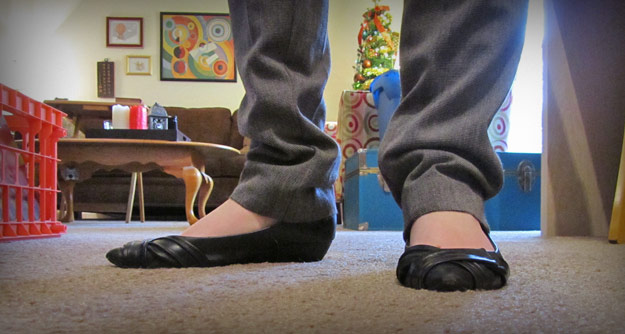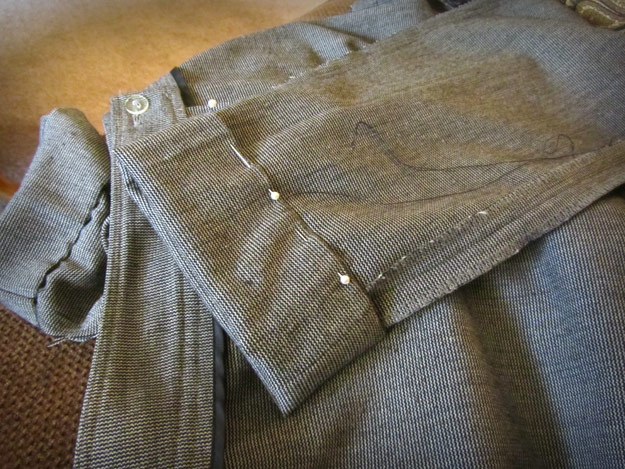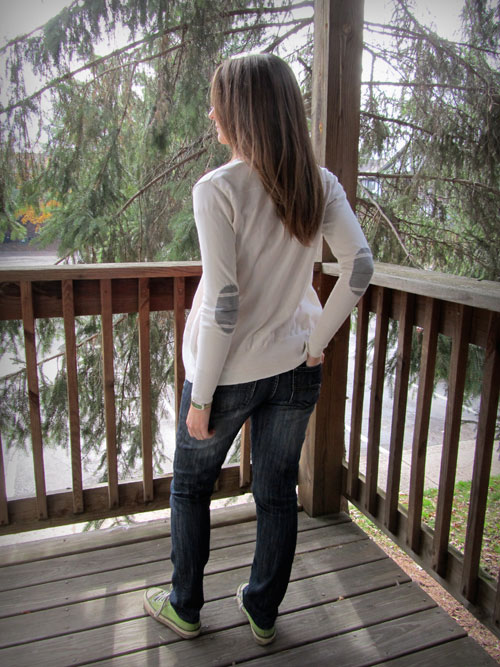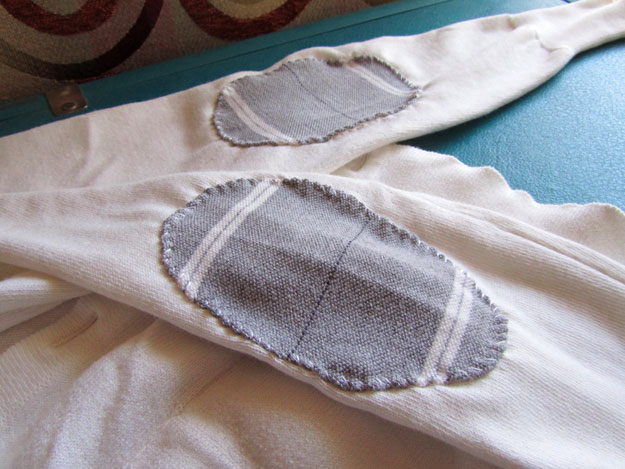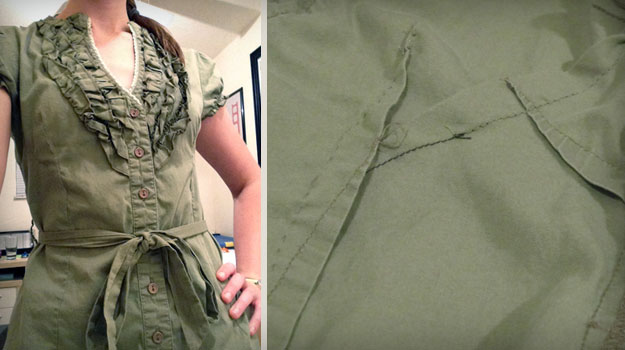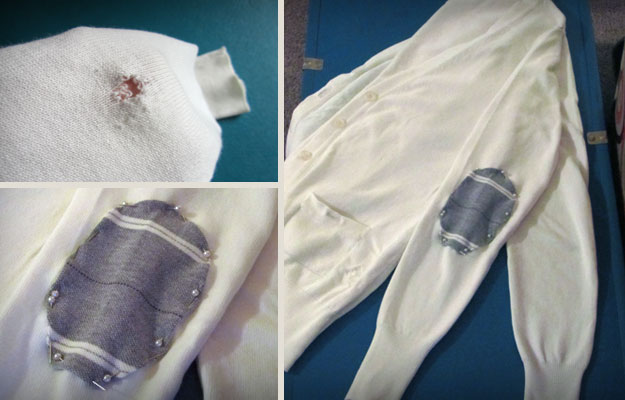Make It Work: Ceramic Crock

At my company, we have a Christmas tradition of sending out ceramic crocks containing tubs of cheese spread as customer appreciation gifts. We ended up with some extras and being the waste-not, want-not girl that I am, I took one home. I’m still working through the cheese itself (“cheese food,” technically, according to the package), but I took a liking to the ceramic crock and wanted to see if I could transform it into something less logo’d and more reusable.
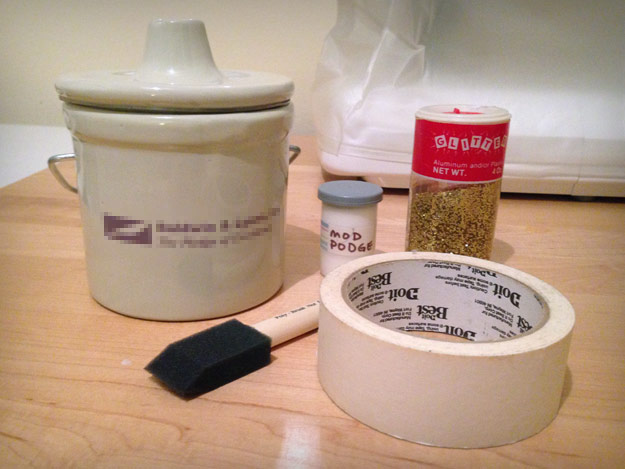
I’ve been itching to glitterize something for a couple of months, but I hadn’t picked a project yet, since I didn’t want to turn something recyclable into something unrecyclable by covering it in glitter and glue. I decided I would only glitterize something that was already unrecyclable… like a ceramic crock! I determined that a stripe of gold glitter around the circumference of the crock would be the perfect way to cover the logo. The supplies needed were minimal:
- Glitter
- Mod Podge
- Foam brush
- Masking tape
- Newspaper
I got my glitter and Mod Podge from Indy Upcycle, a local shop that resells unwanted craft supplies. It’s one of my absolute favorite stores: not only is the concept ingenious, but it reduces waste, it allows me to do DIY projects without supporting mass production of craft supplies, the prices are dramatically lower than retail, and you’re encouraged to buy only what you need (which is why I have a film canister of Mod Podge instead of a huge jar). I highly recommend looking to see if you have a similar store in your community, and if you don’t, maybe start one, because this idea is golden!
I began by using the masking tape to mark the edges of the stripe. You could also use painter’s tape for this; I just happened to have masking tape. I wasn’t terribly precise, and the stripe turned out a little crooked as a result. If you want it to be perfectly straight, I recommend measuring. I also taped the handle so it would stay upright and out of the way.
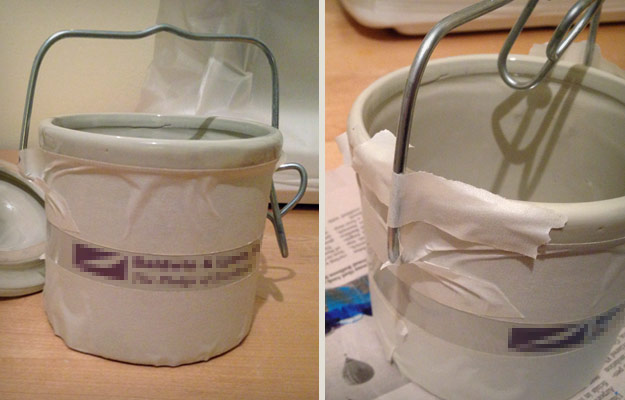
Next I used the foam brush to paint on a thin layer of Mod Podge. I was surprised by how little Mod Podge I needed. Then I started sprinkling on the glitter. Do this over newspaper to catch the extra glitter! Otherwise you will have a tragic (yet sparkly) mess.
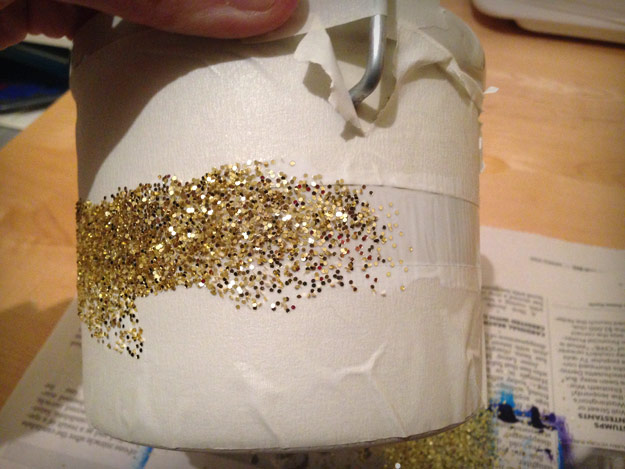
After the glitter was on, I waited a couple of minutes for it to set, then I peeled off the tape (except for the tape holding the handle upright). While the Mod Podge was still pliable, I used my fingernail to adjust a couple of particularly crooked parts of the stripe.
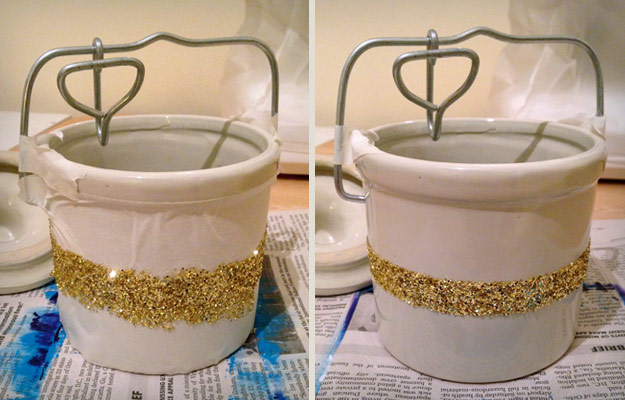
I waited about 10 minutes then applied a topcoat of Mod Podge, again using the foam brush. The topcoat keeps the glitter from flaking off, which is especially important because I plan to use the crock around food. Nobody likes glitter in their salsa.
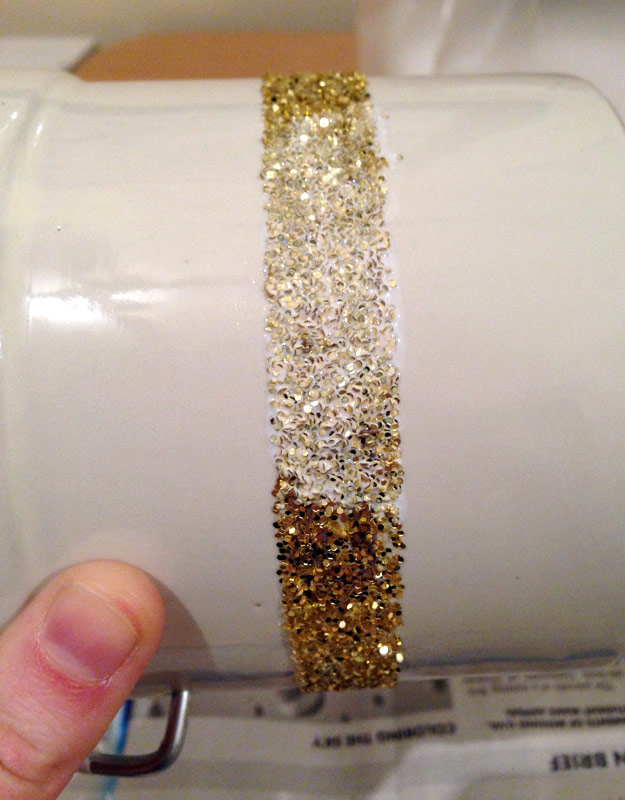
I waited a couple of hours for the Mod Podge to fully dry, then ta-daaaa!
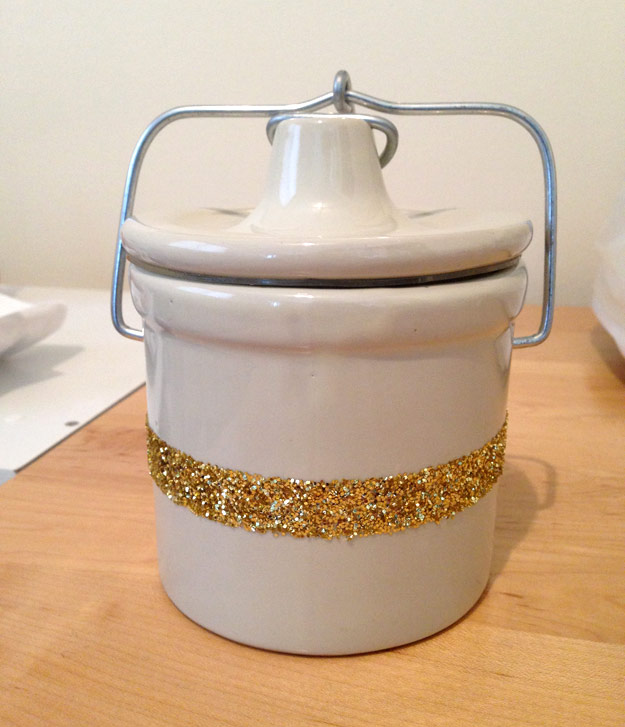
The project took about 30 minutes of active time, plus drying time. Even with the topcoat, the glitter is by no means waterproof, so I envision using it in ways that will only require me to wipe out the inside. For example, I could keep dip cool during a party by putting a few ice cubes in the bottom then the container of dip on top, or I could use it for dry snacks like nuts or candy.
I feel much better now that I’ve got some glitter in my life. Have you ever turned a logo’d promotional item into something you like and use? Does anyone else get an insatiable urge to cover things in glitter?
P.S. I’m finally getting on the Bloglovin train, so follow my blog with Bloglovin if that’s your reader of choice!


